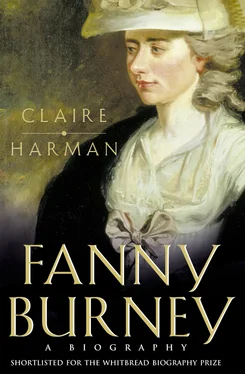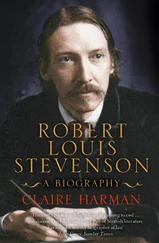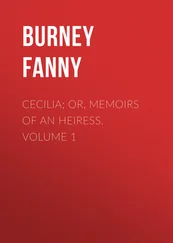Esther Sleepe was an intelligent and accomplished young woman, a professional musician (at the time when she met Burney she was, unusually for her sex, a freeman of the Company of Musicians) of respectable but humble background. * Her father appears to have been Richard Sleepe, a jobbing musician and leader of the Lord Mayor’s band, which performed at civic functions, parades and other occasions which required ‘City musick’, such as the laying of the foundation stone of the Mansion House. 20 Esther’s mother was the daughter of a M. Dubois, probably Pierre Dubois, of an immigrant Huguenot family who kept ‘a Fan Shop in Cheapside’ at 43, The Poultry. The type of shop indicates some connection with musical instrument-making, since Parisian instrument-makers had no guild of their own in London at the time and ‘often became members of the company of Fan-makers’. 21 No doubt it was through music-making that Richard Sleepe and Frances Dubois (who had anglicised her name to Wood) met. They were married in 1705.
In Memoirs of Doctor Burney , Fanny Burney gives portraits of her mother and maternal grandmother which are so idealised as to be positively irritating. Her maternal grandfather, however, comes off very badly. ‘Old Sleepe’ was, she roundly asserts, ‘wanting in goodness, probity and conduct’, leaving his daughter ‘nothing to boast from parental dignity, parental opulence, nor – strange, and stranger yet to tell – parental worth’. 22 He lived until 1758, by which time he must have been at least in his seventies, and yet he does not feature in any of Fanny Burney’s personal reminiscences, nor in those of her father, and he did not have anything to do with his daughter’s marriage to Charles Burney in 1749. Taken with Fanny’s dark hints about his reprobate nature, Sleepe’s absenteeism suggests either that he had abandoned his wife and family, which was numerous, or perhaps spent time in prison. Thirteen children of the couple are recorded in the baptismal registers of three separate city parishes; * considering the extent of Blitz damage to parish records in the City, this has to be taken as a minimum number. At least six of the children must have died in infancy, because of the re-use of their Christian names; the seven possible survivors range in age from a brother eighteen years older than Esther to another brother five years her junior. The only siblings of hers known to survive into the latter half of the century were a sister called Mary, born in 1715, and a brother called James, born the following year, who was maintained as a poor relation and part-time handyman by the Burneys, much-loved but referred to as if slightly simple.
Another factor that suggests that Richard Sleepe may have absconded from family life is that Esther is said to have been brought up in her maternal grandfather’s household, the ‘Fan Shop in Cheapside’. French was the language spoken most often there; the little girl, we read in the Memoirs , did not learn that language so much as ‘imbibe’ it. 23 Esther’s grandfather Dubois was a Huguenot whose family had come to London in the great Protestant exodus following the revocation of the Edict of Nantes in 1685, but his daughter Frances, very oddly, had been brought up as a Roman Catholic and continued to practise that religion devoutly all her life. In the Memoirs , Fanny Burney can only account for her grandmother’s religion by guessing that it was a matter of ‘maternal education’, 24 but if so, Frances Dubois Sleepe practised Catholicism in isolation and did not seek to pass it down to further generations.
Her influence and example were probably all the stronger for this, and, as we shall see, Charles Burney later feared Fanny might succumb to Roman Catholicism. The child of a mixed marriage in an age of bigotry, grandmother Sleepe represented a kind of ecumenical ideal: in her granddaughter’s opinion, ‘the inborn religion of her mind […] counteracted all that was hostile to her fellow-creatures, in the doctrine of the religion of her ancestors’. She had, in Fanny’s words, a nature ‘so free from stain, so elementally white, that it would scarcely seem an hyperbole to denominate her an angel upon earth’. 25 Little wonder that pious Fanny tried to copy such a paragon. ‘If praying for the Dead make a Roman Catholic’, she wrote to her sister many years later, ‘I have been one all my life’. 26 Esther Sleepe, too, believed in the power of prayer and in communion with the dead. Fanny was at pains to point out that her mother ‘adhered steadily and piously through life’ to the Anglican faith, but the truth is that they had both inherited a religious intensity and a degree of superstitiousness from their admired and beloved relative: they were both proud English Protestants, but said their prayers, as it were, with a pronounced French Catholic accent. *
Charles Burney’s fondness for his mother-in-law, whom he loved ‘as sincerely as if she had been his mother-in-blood’, 30 clearly owes something to the failure of warmth from his actual ‘mother-in-blood’, but also reflects gratitude for Mrs Sleepe’s support of her daughter through the shameful illegitimate pregnancy and beyond. Burney neither abandoned his mistress nor felt free to marry her in 1748, because of his arrangement with Greville, which had been in operation less than a year and had two more years to run. Not only would there be legal penalties applicable (in theory) if he married before 1751, but in a wider sense, Burney’s hopes of promotion in life depended on staying with Greville, to whom he felt he owed a debt of gratitude for buying him out of the articles with Arne. The prospect of waiting two years to marry must have been hard for Esther and her mother to bear; the pregnancy became daily more obvious, and Burney increasingly anxious about how to broach the subject with his patron.
The Grevilles themselves had their first child, a daughter called Frances (later the famous beauty Mrs Crewe, a friend and patron of Charles Burney) in November 1748, and by the next spring were ready to depart on an elaborate foreign tour, intended to last ‘some years’. They expected Burney to accompany them, and it seems, for a time at least, he felt he would have to go. He had a miniature portrait of Esther painted by the well-known artist Gervase Spencer ‘just before our marriage’ (though it is unlikely that Esther would have sat to any artist in the last months of her pregnancy or during the four weeks after the birth), ostensibly to take with him on the trip. Perhaps he thought she would see the expenditure of about three pounds on this memento as a gesture of commitment. It was an uncomfortable juncture; she could not have been anything other than alarmed at the prospect of her baby’s father leaving the country for so long, and in such grand company.
Boldness was not one of Charles Burney’s virtues. He dithered childishly about how to get out of the projected Italian tour, dropping hints to the Grevilles that he was in love, and looking gloomy. His child, a girl they named Esther, was born on 24 May 1749. Burney always doted on children, and perhaps the sight of his first-born and his vulnerable, patient mistress had a catalysing effect. He knew he couldn’t really leave them, and to introduce the subject in conversation with the Grevilles, he showed them the portrait of his sweetheart (not mentioning the baby, of course). There are indications that the aristocratic young couple found his melancholic behaviour a bit of a joke. Their light-hearted dismissal of his problem when it finally got an airing was to ask why he didn’t marry her. ‘May I?’ Burney asked, delighted at getting permission so easily. He and Esther were married the very next day, at St George’s Chapel, Hyde Park Corner, a popular venue for shotgun nuptials.
Читать дальше












